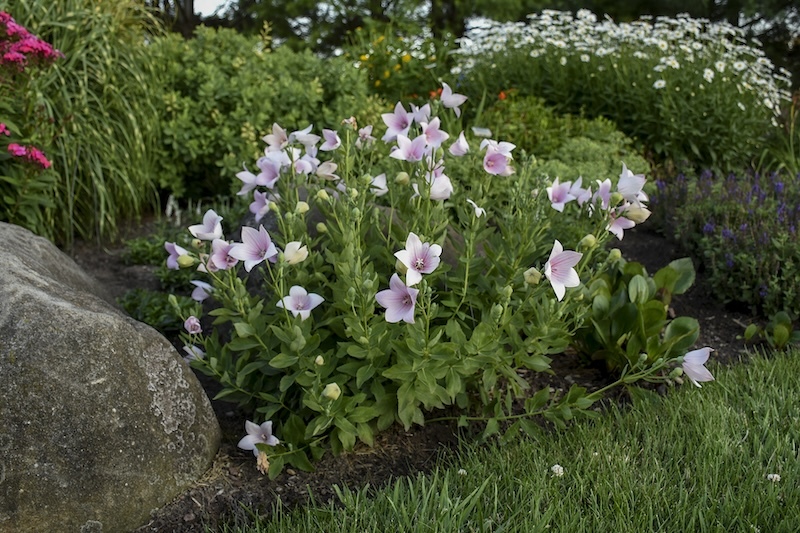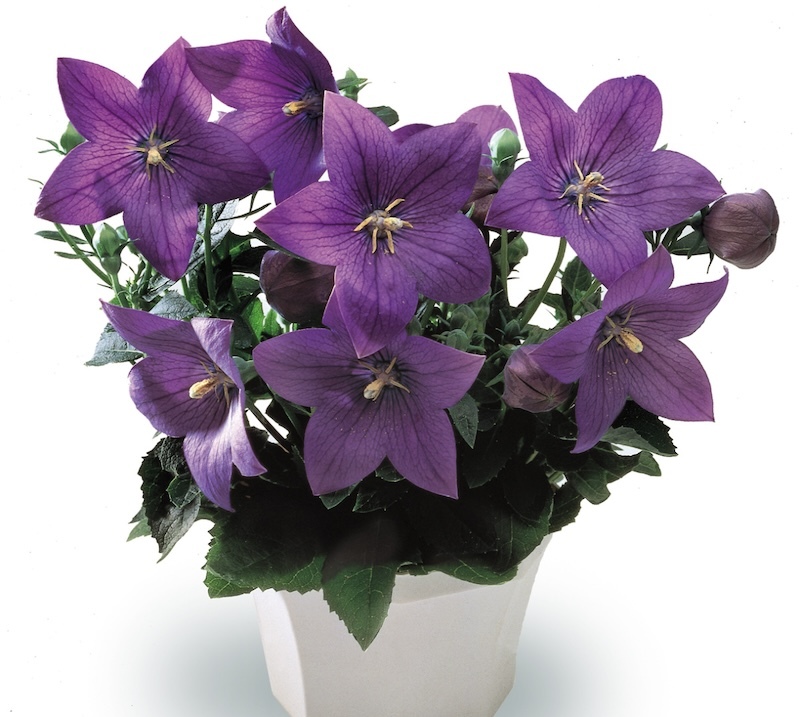Growing Balloon Flower
Balloon Flower is easy to maintain and prized for its showy flowers. Unique, puffy flowers are star-shaped and often measure 2 to 3 inches across. The blooms are shades of purplish blue, white, or pink. The showy flowers bloom on upright stems dotted with flowers and foliage. They continue to bloom all summer for a spectacular display.

Scientifically named Platycodon grandiflorus, Balloon Flower is native to China, Korea, Japan, and Russia. Balloon Flower plants are herbaceous perennials that grow in zones 3 through 8. These easy-care plants are excellent in mixed beds or borders. The flowers and foliage complement a rock garden. The pollinator-friendly flowers make them a good pick for a butterfly garden or simply to support bees and butterflies.
Planting Balloon Flower
Plant Balloon Flower in the spring once the temperatures are consistently warm and there is no longer a chance of frost. Dig a hole slightly wider than the root ball. Amend the soil with organic compost. Balloon Flowers like rich soil. The ideal soil will be loamy, acidic to slightly alkaline, and well-drained. Position the plant in the hole so the top of the root ball is even with the ground. Backfill the hole and gently press the soil into place.
Watering Balloon Flower
Young plants need regular water. For the first few months, keep the soil consistently damp but not waterlogged. Established plants still crave water but can handle more dryness. Rainfall is often enough to support Balloon Flower plants, but they will perform better with water during an extended dry spell. Flowering plants will drop blooms if too dry, so make sure to water during a drought for continued blooming.
Fertilizing Balloon Flower
Fertilizing helps plants continue to grow and flourish. Balloon Flower plants are not heavy feeders and grow best in soil with high organic content. Plants in low-quality soil benefit from a balanced fertilizer applied annually in the spring. Time fertilization for late winter or early spring before new growth appears.
Pruning Balloon Flower
Balloon Flowers are clump-forming plants with a rounded form. Their natural shape is pleasing and does not generally require much pruning. Pinch tall stems in late spring to promote a full and bushy form. Remove faded flowers to encourage buds to open and promote an extended bloom season. Remove dead or damaged growth at any time.
Caring For Balloon Flower in Pots
Container-grown plants have the same care requirements as landscape plants, except they need water more often. Situate a potted Balloon Flower plant in full to partial sun. Water when the top few inches of the potting soil are dry. Drench the soil until water drains through the container. Apply a water-soluble fertilizer monthly to encourage prolific blooming and growth.

Winter Care For Balloon Flower
Balloon Flower plants are herbaceous perennials, so they do not require much winter care. In the fall, remove frost-damaged growth. Use pruning shears to remove dead growth to avoid pulling the roots out of the ground. Apply a thick layer of mulch to protect the roots from cold winter temperatures. The mulch will also enrich the soil and support new growth in the spring.
 |
Author Alison Cotsonas - Published 04-12-2024 |
